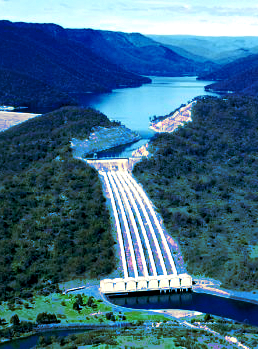Snowy costs questioned
 The promised Snowy Hydro 2.0 project has been described as “too expensive” by a leading energy expert.
The promised Snowy Hydro 2.0 project has been described as “too expensive” by a leading energy expert.
With costs and timeframes blowing out, concern has been raised about whether the multi-billion-dollar scheme is worthwhile.
“Here is a project that is likely to cost five times more than the then prime minister [Malcolm Turnbull] said it would, and whose capability is nowhere near what has been claimed of it,” director of the Victorian Energy Policy Centre, Bruce Mountain, has told the ABC.
“This is a project that we can confidently forecast will be a drain on the public purse and whose service in the transition to a cleaner energy future can be met far more cheaply from other sources.
“Snowy Hydro 2.0 was a political get-out-of-jail card, played at the public's expense.”
Dr Mountain has suggested an independent panel review the project, to see if it is worth doing, and whether the money could be better spent.
Former prime minister Malcolm Turnbull first announced the project in 2017, saying it would cost $2 billion and be up and running by 2021.
Less than a year later, that estimated cost had doubled, and by the time a contract for part of the project was signed in 2019, the cost was up to $5.1 billion — not including transmission costs, which will be billions more.
It is yet to be determined who will actually pay for transmission.
Snowy Hydro says it should not bear the cost, as it will not be the only user of the infrastructure. The company says taxpayers will pay for it, and that they will welcome the “downward pressure” on energy bills.
Dr Mountain is not convinced.
“There will be public subsidy in Snowy Hydro — whether it comes from the electricity payer or the taxpayer is yet to be worked out — but it will be a loss overall,” he said.
Energy Minister Angus Taylor has not conceded that there has been a major cost blowout.
“We made our investment decision after we had done a cost benefit and after we've done the feasibility work in December 2017. The cost came out at $3.8 billion to $4.5 billion,” he told reporters.
There is also the question of Snowy Hydro’s competing priorities.
The government wants the company to push down power prices but also make a profit on behalf of taxpayers.
Mr Taylor claims it will do both.
“The beauty of this investment is that it can deliver an investment for shareholders, which is Snowy and ultimately the Australian taxpayers, and at the same time put downward pressure on electricity bills,” he said.
Despite Mr Turnbull’s original claim that the project will be generating electricity by 2021, Snowy Hydro says it will be at least 2025.
The new scheme aims to create an energy store, where water is pumped from the lower reservoir, Talbingo, to the upper reservoir at Tantangara when power prices are low.
The water would then be released and run back down hill to generate electricity when demand and power prices are high.
The plans require 27 kilometres of new tunnels, which conservationists say will permanently damage or destroy 100 square kilometres of the Kosciuszko National Park.
Snowy Hydro says only 1 square kilometre of national park will be permanently damaged.
Experts say there are far cheaper ways to achieve the same result as the massive Snowy Hydro 2.0 scheme, such as demand management.
They also criticise the size and seeming inevitability of the scheme, saying it has distorted the renewable energy investment market, pushing potential competitors away from new projects.








 Print
Print